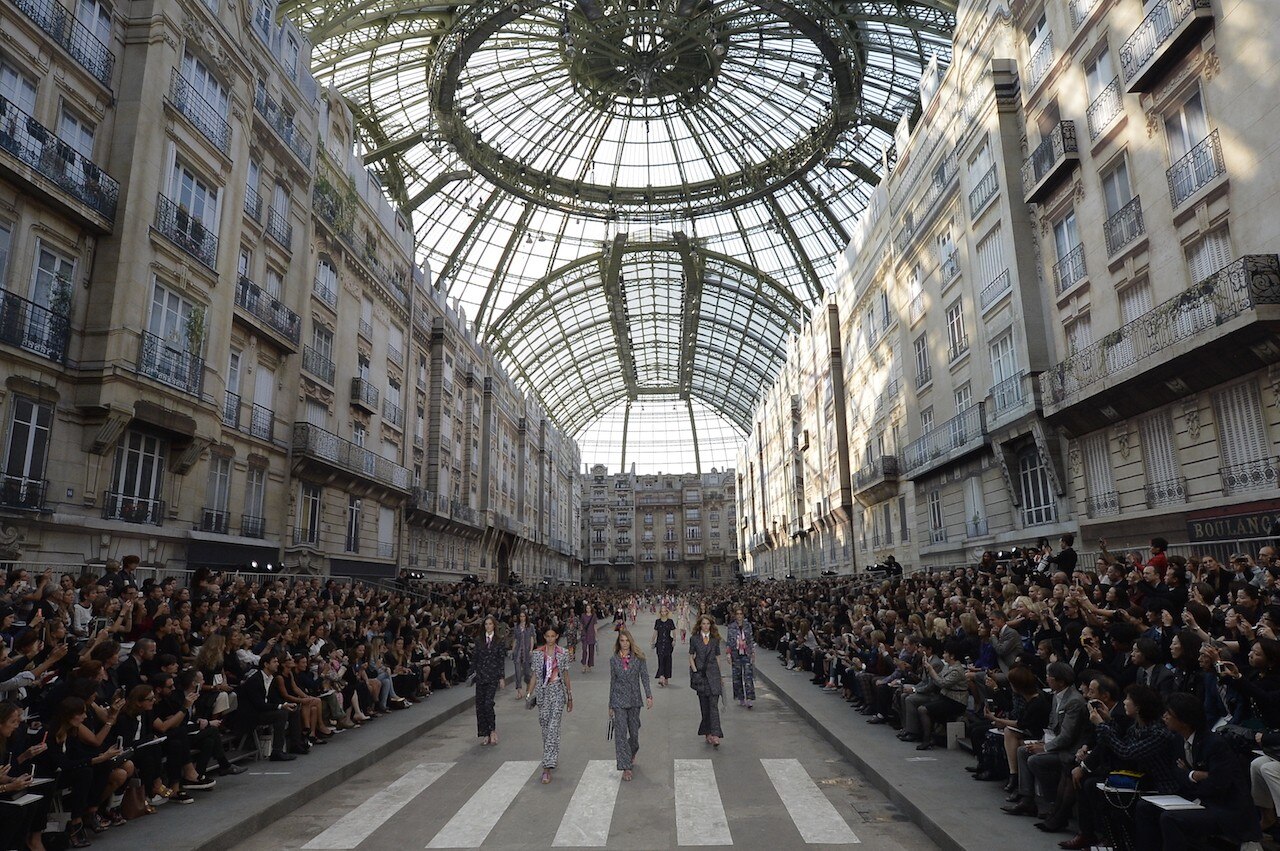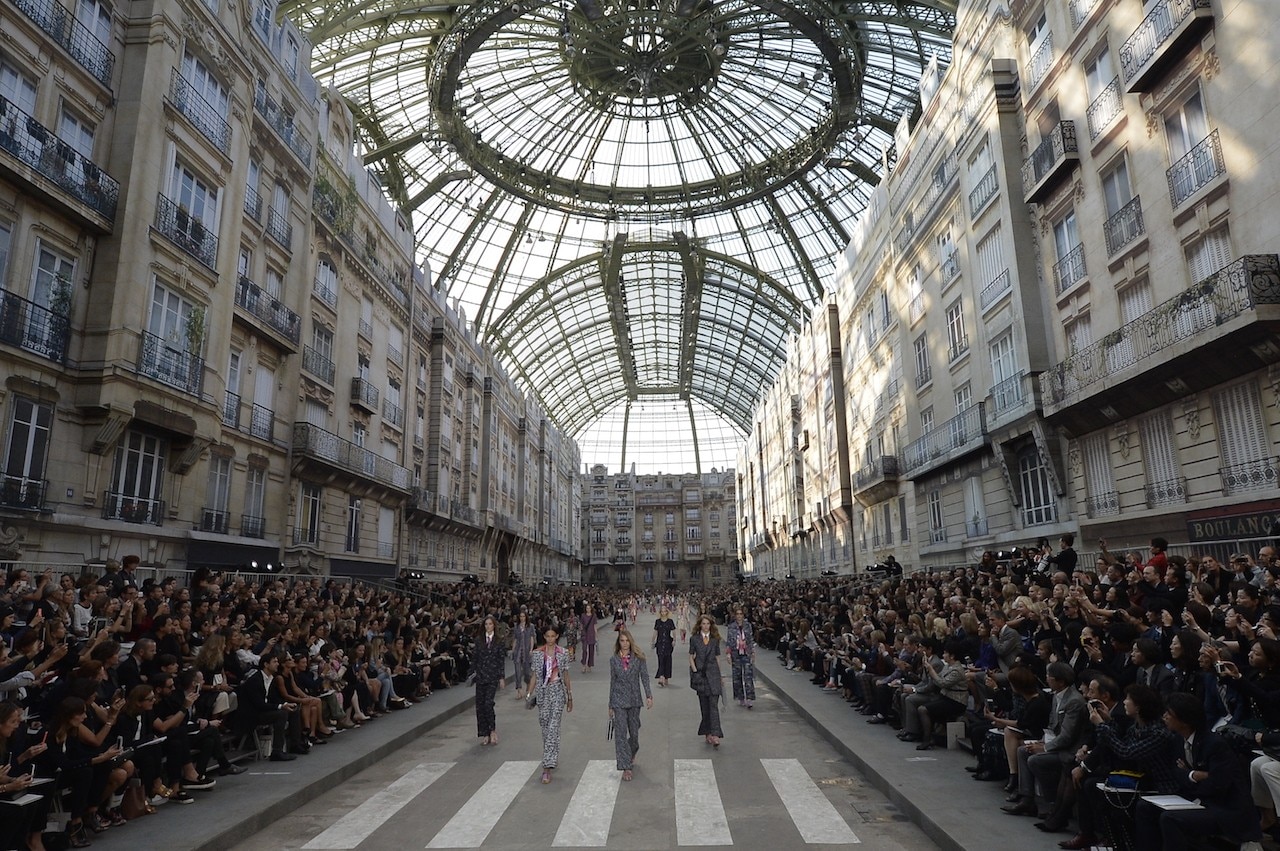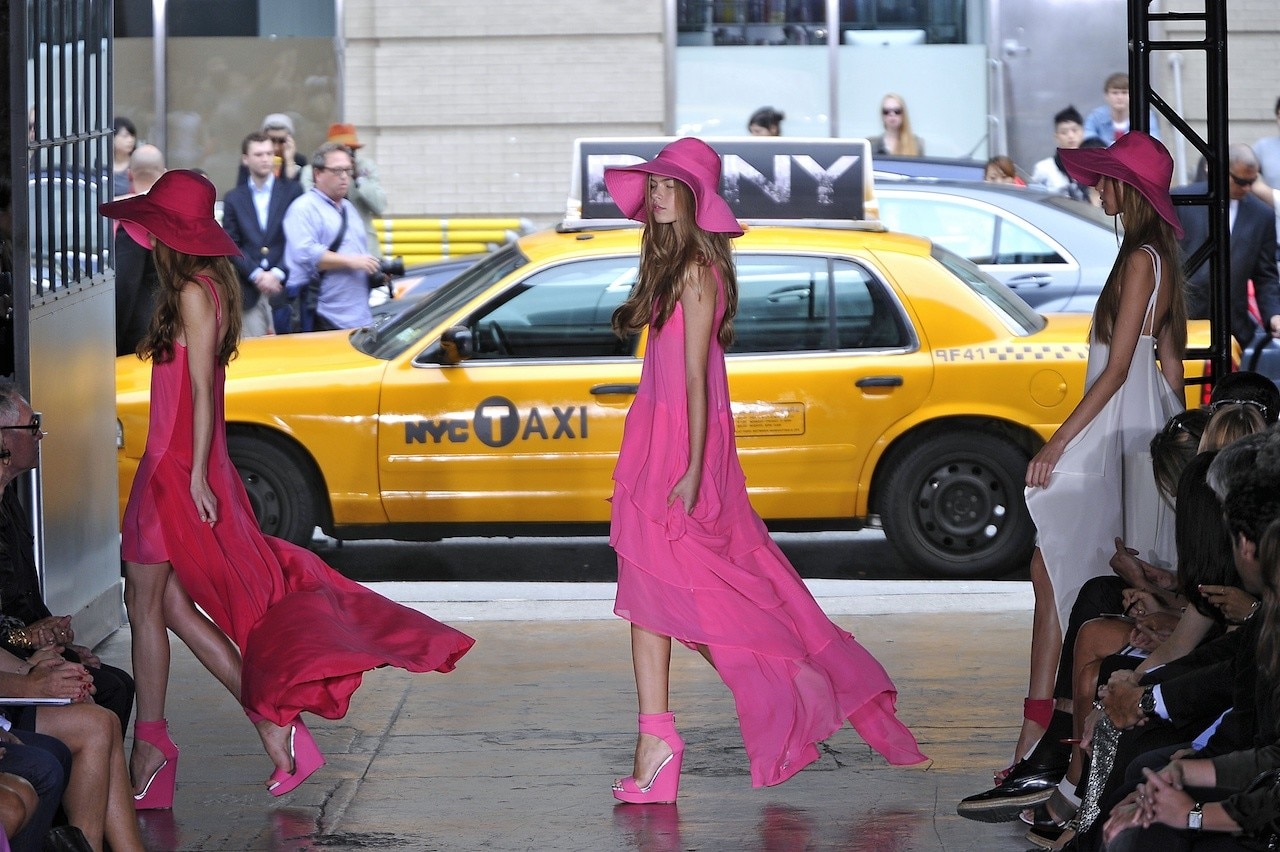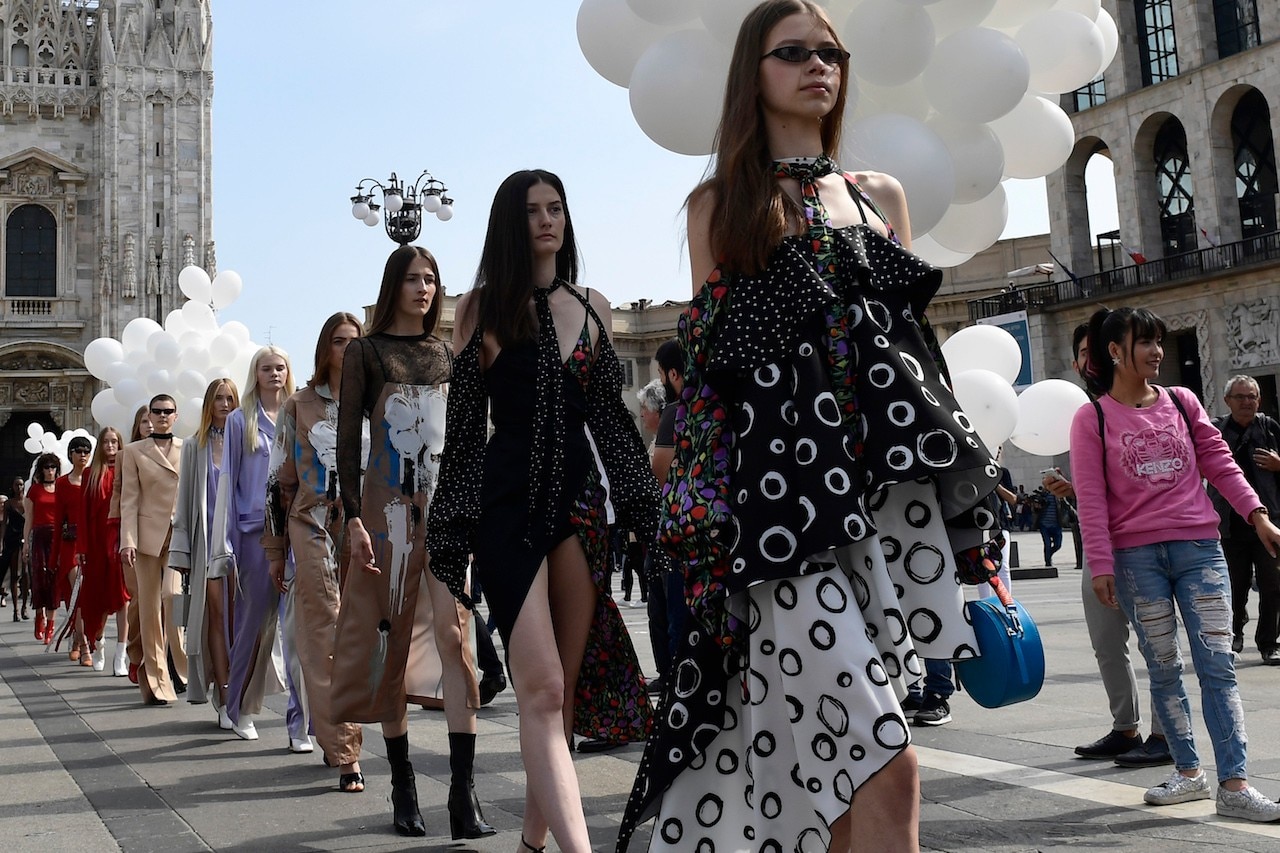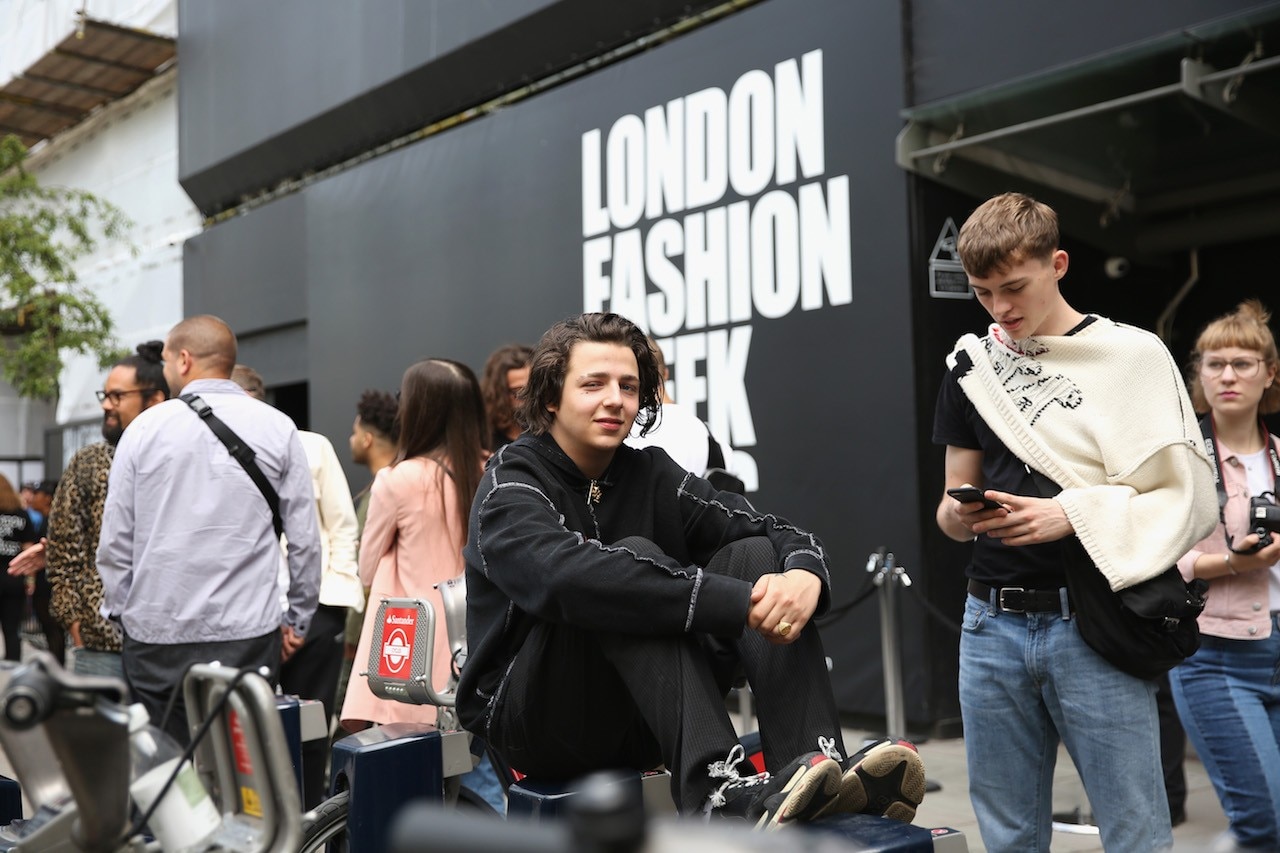This article was originally published on Domus 1038, September 2019
Each year, fashion weeks come round at regular intervals on their own calendar. They enliven the fashion sector as well as the cities that host them with a busy schedule of runway shows, business gatherings, parties and exclusive events. As the fashion system flits from one part of the world to another, dictating new trends, its constantly growing market is seeing a proliferation of initiatives on different continents. And yet the international fashion capitals continue to be London, Milan, New York and Paris: the big four. In these cities, creativity, production, research, innovation, business and communication are combined in a solid economy and a cultural ecosystem that reinforce these urban centres’ global primacy.
Fashion weeks are the celebratory events of this leadership status. They explore and trace trajectories of taste and communication strategies with knock-on effects in other business and cultural sectors. The history of fashion weeks is rooted in the first occasional shows organised in mid-19th-century Paris. In the early 20th century they spread to other European and American cities. The rise of the fashion show was a paradigmatic revolution that transformed the relationships between designers, models and magazines, laying the foundations of a true industry. The fashion week concept began to emerge only in the second half of the 20th century, with week-long events held seasonally, bringing together a number of runway presentations in a coordinated programme.
The first such event took place in New York in 1943. Eleanor Lambert (1903-2003), a great promoter of American fashion, saw that the difficulty of importing French fashion from war-torn Europe offered a chance to showcase US designers. With this in mind, she invented “Press Week”. Europe followed suit. The Italian Chamber of Commerce founded Milan Fashion Week in 1958. In 1973, the Fédération de la Haute Couture et de la Mode created Paris Fashion Week to institutionalise the system of runways that was already active in the French capital, and had entered the limelight with Dior’s first famous fashion show in 1947. The British Fashion Council launched the first London Fashion Week in 1984. The sector mushroomed and became established internationally, partly due to synergies between fashion houses and the specialist press. By the early ’80s, the fashion system had become a global phenomenon. Fashion shows were true spectacles combining couture and art in events with a strong visual impact.
Today the big four fashion weeks are organised according to an annual agenda that facilitates the movement of thousands of professionals. The purpose is not just to create and communicate trends and images, but above all to fine-tune business agreements and clinch deals.
Today the practices of communication and the need to affirm a presence on the market mean that fashion houses have to impress and amaze. The choice of locations has become all-important, triggering competition for the most striking or coveted contemporary or historical venues
The crucial point is to get noticed. Until the 2000s, New York and London concentrated their fashion shows in temporary structures to facilitate movement from one event to another. But today the practices of communication and the need to affirm a presence on the market mean that fashion houses have to impress and amaze. The choice of locations has become all-important, triggering competition for the most striking or coveted contemporary or historical venues, from the Grand Palais in Paris to the Manhattan piers or disused industrial buildings in Milan’s suburbs.
Fashion has played a crucial part in regenerating disused or derelict industrial spaces, especially in this century. The effects reverberate far beyond the temporary nature of fashion shows, influencing the real estate market and shaping public policies. They have also extended the urban impact of the fashion system via the establishment of fashion maison headquarters in the cities, along with boutiques, cultural foundations connected to the brands, and the setting up of training and production facilities. In Milan, the examples of Prada, Armani and Gucci are outstanding.
Yet it is clear that, while fashion has boosted the value and appeal of some buildings or parts of the city, both architecturally and economically, the fear that such operations could generate forms of exclusion is obvious and realistic. A sign of this is the quest to find a new home for New York Fashion Week. The event was forced to give up first Bryant Park and then Damrosch Park at the Lincoln Center,which hosted it from 2010 to 2015, because of protests defending the use of these green spaces by the community. Another example is the debate sparked in London in 2018 by the decision to rent the spaces of the National Portrait Gallery for Erdem Moralioglu’s fashion show, calling into question its public dimension.
All the same, the economic benefits seem to prevail. Fashion weeks generate a substantial financial spin-off, bringing healthy benefits to the hospitality, catering, transport and retail sectors and giving the urban economy a welcome boost. For this reason, in recent decades, countless imitations have flourished in every part of the world, in certain cases having an economic impact even greater than some of the historic big four. The success of the economic model has made the fashion-week model a must for every city that aspires to win a place on the global stage, bringing flourishing new markets to invest in and new cultural identities to be built and affirmed. The fashion capitals, meanwhile, are questioning their future prospects, between sustainability and inclusion, to defend their pre-eminence.
Alessandro Frigerio is a researcher and lecturer at the Milan Polytechnic. Simona Galateo is an architect and curator.


